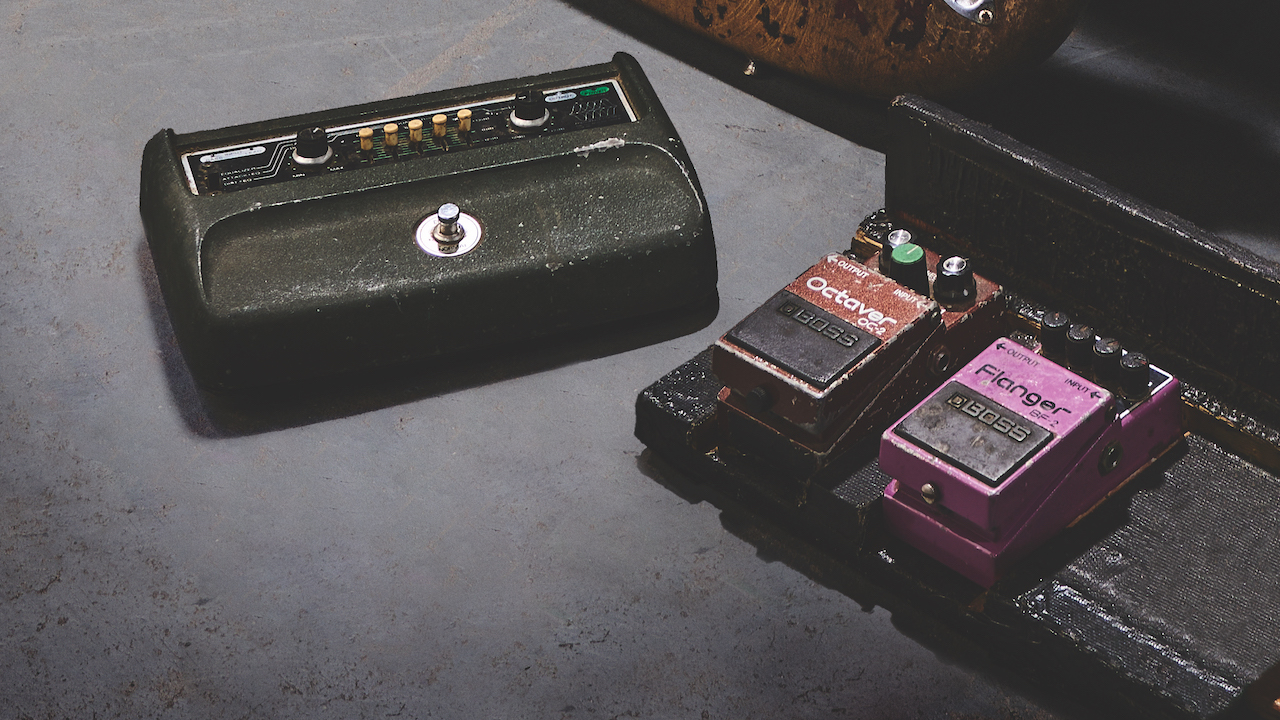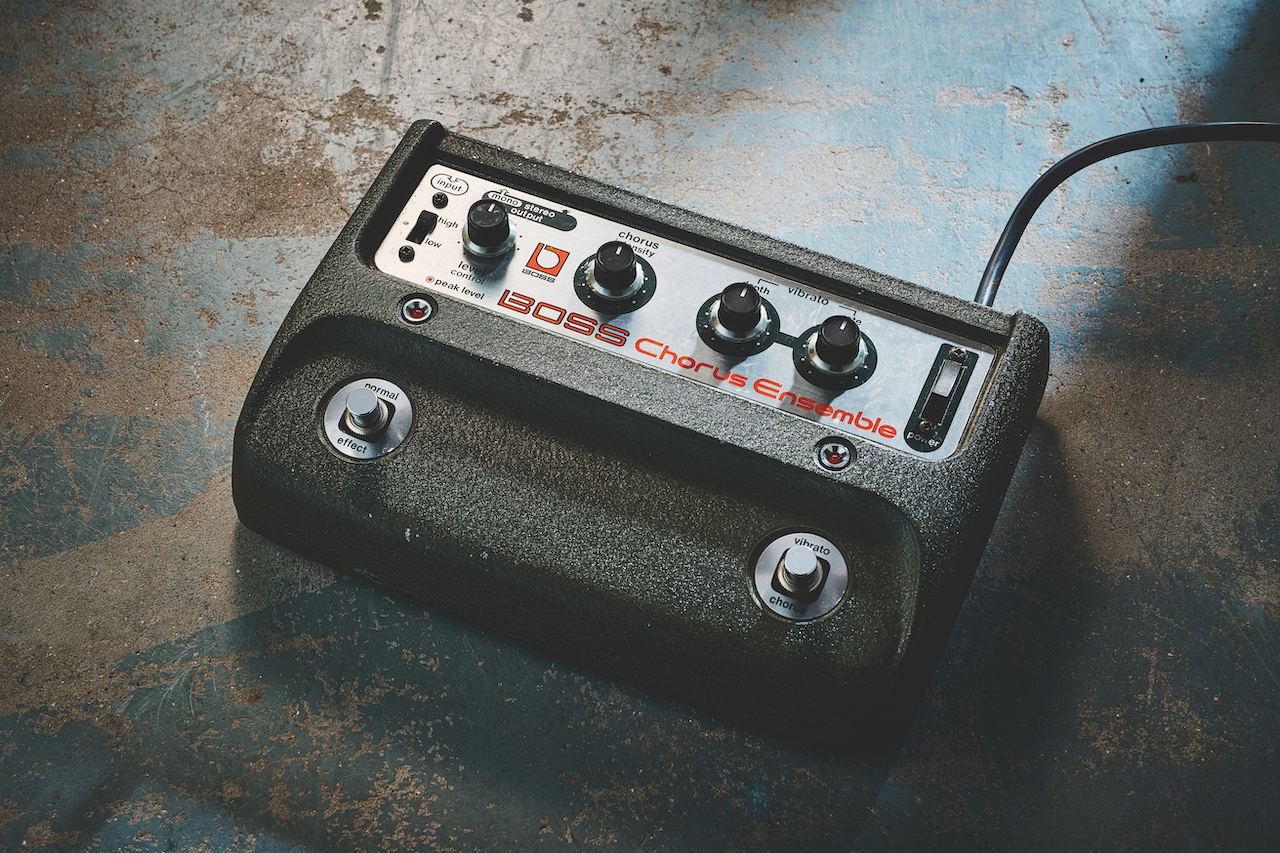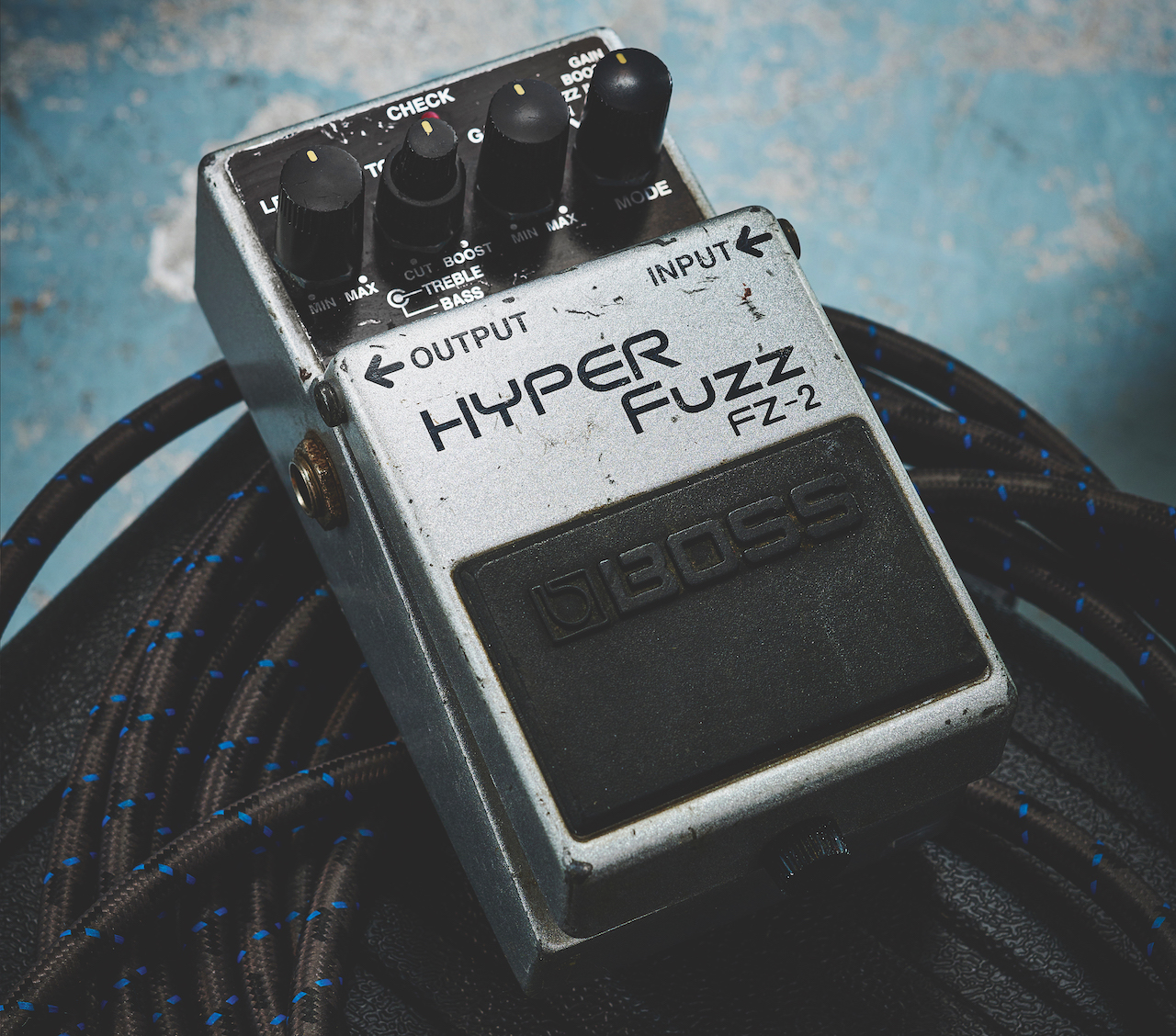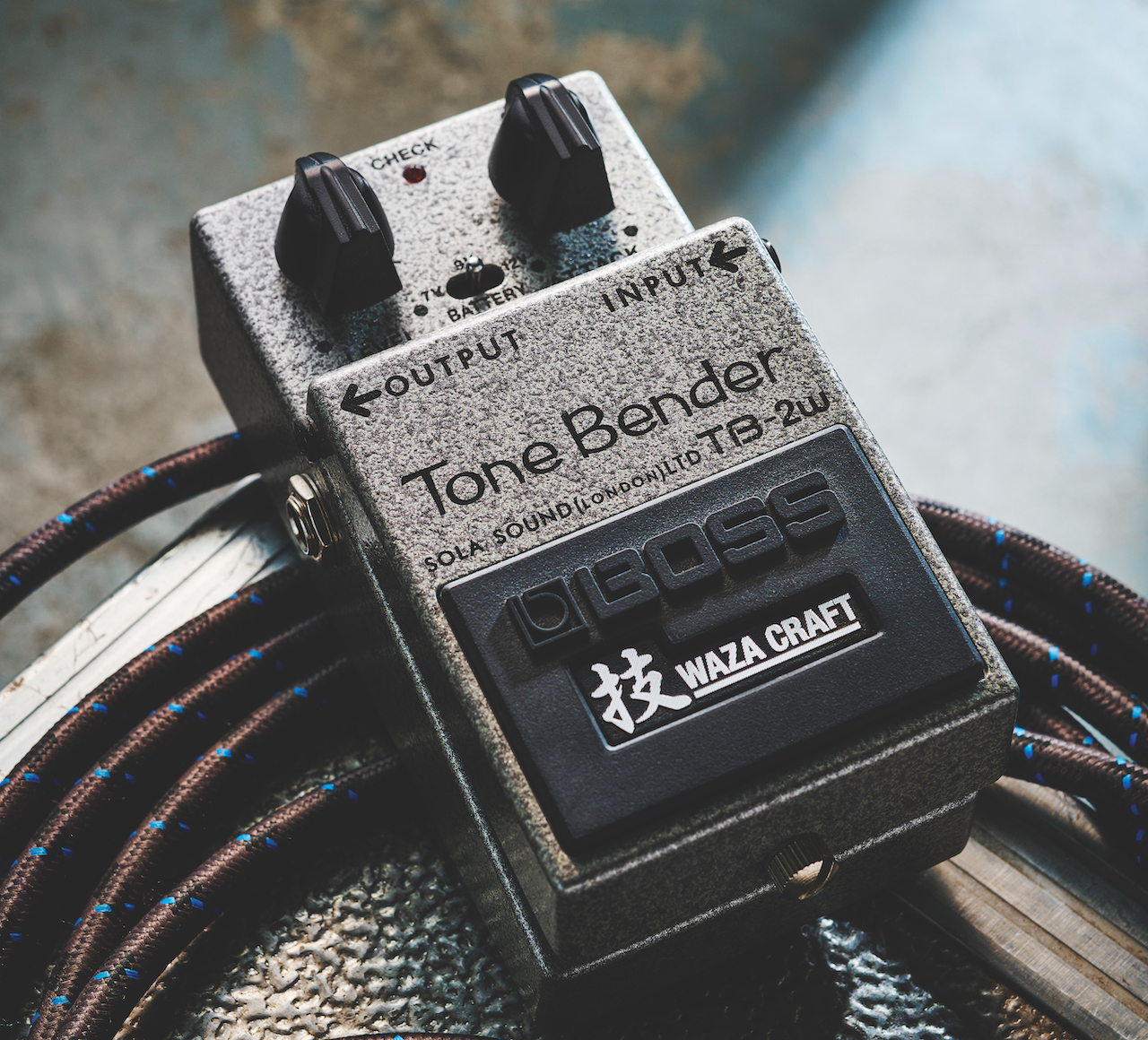
BOSS revolutionized the pedal world with the 1977 release of its first compact pedals – the OD-1 Over Drive, PH-1 Phaser and SP-1 Spectrum. Since then, the compact series has been ubiquitous and there can’t be many guitarists who haven’t owned one at some time.
But while there’s a massive range of BOSS compacts available to buy new, yet more models have been discontinued over the years. Perhaps they were ahead of their time, or possibly their qualities were overlooked in a crowded marketplace – and thus only remained in production for a couple of years.
Today, the very scarcity of such pedals has granted them a cachet and collectibility that has made them among the most sought-after effects in the world.
You only have to look at the Instagram pages of collectors such as @boss_pedal_collector and @boss_pedal_aficionado to see that the BOSS collecting bug is not purely about visual impact or a completist desire to own them all – many early BOSS pedals are desirable for their unique sonic qualities and can still play a part at the cutting edge of music.
Before we take a look at the rarest compact pedals, however, we must first give an honorary mention to some earlier and larger BOSS effects.
Although Roland had released pedals earlier (the AP-7 Jet Phaser and AF-100 BeeBaa fuzz to name just two), the first pedal to appear under the BOSS name was the CE-1 Chorus Ensemble in 1976.
BOSS had previously put the newly minted chorus effect into its synths and JC Jazz Chorus amps, but the CE-1 put it into a pedal and these, long out of production, are still very much in demand today and not just with guitarists – you’ll find many a CE-1 used in the recording studio for its spacious stereo sound.
There were other larger-format BOSS pedals from the period, too, such as the DB-5 Boss Driver (used by Rory Gallagher in the '90s), BF-1 Flanger and the GE-10 Graphic Equalizer, all of which are now rare and collectible, but let’s move on to those discontinued compacts…

First up, the SG-1 Slow Gear, a black auto-swell pedal – with its circuit DNA rooted in the NF-1 Noise Gate – that was only in the BOSS catalogue for three years. It muted the attack and swelled the volume of a note’s tail, while Sensitivity and Attack knobs allowed the user to tailor the effect.
BOSS actually puts digital Slow Gear emulations in its large GT-series floorboards, but if you want the real thing they occasionally come up for sale and command a price that matches their scarcity. Online marketplace Reverb.com reports that, in 2022, vintage SG-1s changed hands for an average price of $550, with some examples fetching nearly $650.
Slightly longer-lived in its original production run, the HM-2 Heavy Metal was produced from 1983 until 1991 – the same year BOSS introduced the perennially popular MT-2 Metal Zone.
It is very much the sound of Swedish death metal and in demand by anyone wanting that original buzzsaw sound. And it seems that’s an itch some people simply have to scratch – original examples have seen a 12 per cent rise in value over the past year alone, according to Reverb.com.

Staying with drive effects, the FZ-2 Hyper Fuzz (1993 to 1997), closely related to the vintage Univox Super-Fuzz, offered two distinct fuzz voices and gain boost combined with a two-band active EQ for some tremendously powerful and now highly sought-after sounds.
More intriguing still, however, is the recent surge in interest in the PW-2 Power Driver, available from 1996 until 2000 and used by The Edge on U2’s Vertigo tour. A drive pedal, it has the expected Level and Drive knobs, plus Fat and Muscle knobs for control over bass and mids.
Yet despite its relatively brief association with U2, it remained a sleeper until relatively recently – but made up for lost time during the past two years and saw the single largest jump in value of any BOSS pedal during that period, according to Reverb.com.
Another pedal that features on many collectors’ wishlists is the 1984 DF-2 Super Distortion & Feedbacker, a distortion pedal with a feedbacking function that sustained a note if you held down the footswitch, and had a name change to Feedbacker & Distortion in 1985, making the earlier version more collectible. Moving away from the dirt pedals, one of the first trio of pedals released in 1977, the SP-1 Spectrum was in production for about four years. Its role was to boost a select band of frequencies.
The boosted frequency was variable between 500Hz and 5kHz via the Spectrum knob, while a Balance knob set the blend of normal and EQ’d sound. The PN-2 Tremolo Pan, meanwhile, was a precursor to the TR-2 Tremolo pedal, but, unlike that pedal, features stereo outputs, allowing it to be used as an autopanner. Besides the standard Rate and Depth controls you get four selectable modes – tremolo in square and sawtooth flavors or panning in both flavors.
Bag any one of the above and you’ll be the envy of many a BOSS aficionado and the possessor of a unique tone machine.
What makes a pedal collectible?
There are several factors that may have a bearing on both the collectibility and the cost of discontinued pedals. One thing to note is that the earlier pedals were made in Japan while production later moved to Taiwan, and those Japanese units are the more collectible and expensive, especially if you find a really early one with a silver (rather than black) thumbscrew to access the battery compartment. The label on the base of the pedal also has a significance, which is why you’ll often see pedals listed as ‘black’ or ‘silver label’, and then there are different versions and circuit revisions that have taken place over the years.
As an example, let’s take a look at the humble DS-1, the orange distortion pedal that started life in 1978 and has never been out of production. Let’s face it, there are loads of these about, but, barring the really rare commemorative models out there, the most revered early version is made in Japan, has a silver screw and black label. It’s perhaps really about the circuitry, though – early versions used a Toshiba preamp chip, but in 1994 the pedal (by now made in Taiwan) was redesigned to use an op-amp. There have been other changes since and while all DS-1s may be in the same distortion ballpark, there’s plenty for players and collectors to think about.
Another strand to this story is the BOSS collaborations with other companies, starting with pedals officially licenced by Fender and launched in 2007; the FDR-1 and FBM-1 were designed to recreate the sound of Fender amps, the ’65 Deluxe Reverb and ’59 Bassman respectively. There was also the FRV-1 ’63 Fender Reverb based on the standalone reverb tank immortalised in surf music.

Collaborative collectibles
Perhaps the most sought-after of collaborative pedals, though, isn’t quite so old. The TB-2w was a collaborative effort between BOSS and Sola Sound in 2021 to create a compact pedal version of the renowned 60s fuzz, the Tone Bender Professional MKII.
This was a limited run of just 3,000 pedals, the limited run being a necessity due to component availability, namely the germanium transistors at the heart of the circuit. These, of course, all sold out rather quickly (we couldn’t even get hold of one to review in Guitarist) and, needless to say, used examples come at a premium.
In fact, while prices of rare vintage BOSS pedals may have softened somewhat recently, Reverb.com reports that the TB-2w remains hot property. Occasionally fetching four-figure sums since their release, these pedals regularly change hands for several hundred pounds.
Coming right up to date, another collaboration is with JHS Pedals and was created to celebrate the 40th anniversary of compact pedals. The JB-2 Angry Driver is a melding of the BD-2 Blues Driver with JHS Pedals’ Angry Charlie. While this is not exactly a collectible at the moment as it is still readily available, it might not always be around. Maybe you should get one while you can…
Now, while many BOSS pedals have disappeared they can also come back. So far we haven’t mentioned such revered early classics as the CE-2 Chorus, the DM-2 Delay or the DC-2 Dimension C, all of which are still sought after in their original versions.
The thing is, if it’s the sound of these pedals that you want, rather than a vintage example, you need look no further than the Waza Craft series of premium versions of much loved and long gone pedals. The CE-2w, DM-2w, DC-2w and several others are all available now, but perhaps they will become the unobtainium collector’s items of the future.
This month, Guitarist magazine includes a free supplement dedicated to 50 Years of BOSS. Click here to download it as a digital version or here for a 'digital page-turner' on Issu.







